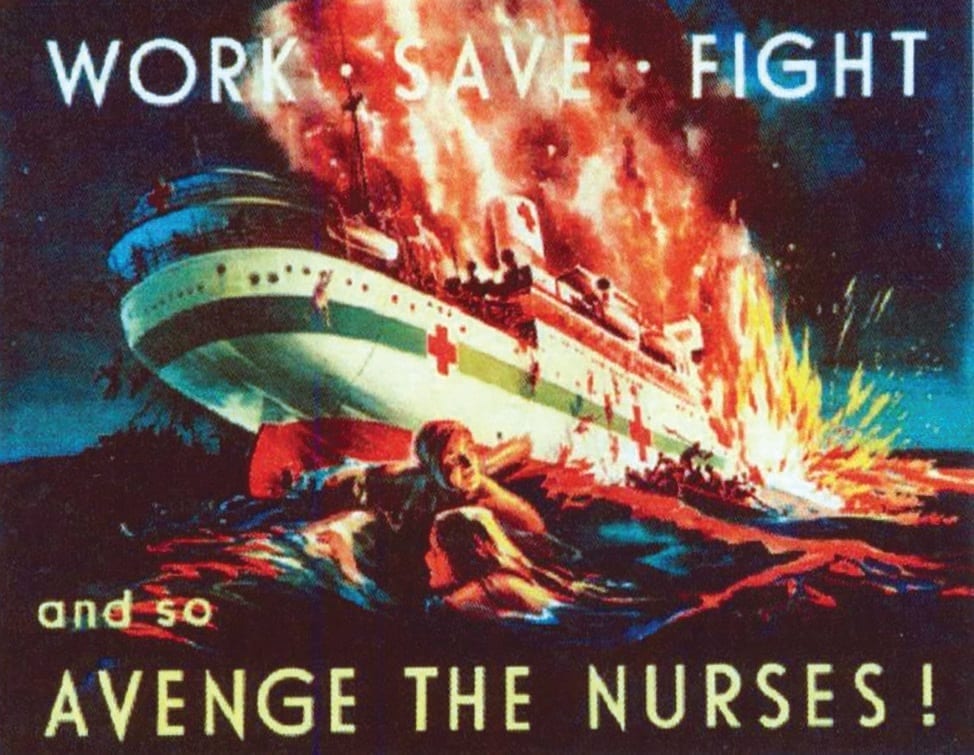Tags: War. Military secrets. WW2. History. Bribie Island. Queensland.
Are there still some military “secrets” about Bribie Island in World War 2 to be discovered? Most people know that military structures and defence installations were constructed on both the north and south of the island during WW2, as a key strategic defences for Brisbane and Australia. In the darkest days of the War, it seemed to be “When” rather than “If” Japan invades Australia. Bribie Island was considered to be the strategic location and was at the Eastern end of an imaginary line drawn across Australia, known as the “The Brisbane Line” which may have become the northern limit of defence.
When the Hospital Ship “Centaur” was torpedoed by a Japanese submarine and sank on the night of 14 May in 1943, off Moreton Island with the loss of 268 lives, there was only one recorded sighting of it. This was by a soldier on the lookout at 4:15 am in the morning at Fort Skirmish on the south of Bribie Island. There is still debate about many aspects of this sinking. The existence of an underground hospital at Fort Bribie on the north of the island is also a hotly debated topic.
Sketch of the underground hospital, based on Clarrie Espin’s descriptions, drawn by a journalist from “Caloundra Observer” 24 April 1994
Several military historians have researched and written books on this subject over many years. One of these is John Groves of Caloundra who has written books titled “Fort Bribie” and “Digging deeper into North Bribie Island during World War 2” over the last 20 years. John Groves interviewed many servicemen stationed at Fort Bribie during the War, and some had specific memories of an underground hospital. There seems to be a fair amount of agreement that a Hospital was built, although no Hospital is marked on any Map or any mention in military records.
Despite extensive investigation of all Fort Bribie structures over the years, no remains of any possible Hospital have ever been found, and the existence of such a structure has been questioned. John Groves documented the memories of various soldiers who spent time at Fort Bribie in 1942/3 and their recollections include; “Building a 24-bed underground E-shaped Hospital with two entrances”. “A building dug into a sand hill with a sandbag wall hiding the entrance”.
“Made of tea tree logs cut from the bush with sandbags for roof and walls” “Built-in 1942 but never used for the intended purpose and later abandoned”. “Waking up the Doctor who was frequently drunk in an underground room” It seems that if there was an underground Hospital it was a well-kept secret and even the soldiers who served there knew nothing much about it.
They were expected to carry out their tasks and were not allowed to wander around in classified areas. In July 1943 records show the first Doctor was posted to Fort Bribie. He was Dr. Noel Ure, a 28-year-old militia captain who recalls a large underground room with steps leading down to an area with 15 stretcher beds set up. However, he also confirmed that any sick personnel was always sent to the hospital in nearby Caloundra and that the purpose of an underground hospital was for Emergency use only, in case of enemy invasion.
As this never occurred it is probable that the building was not used at all. Other soldiers remembered a 24-bed underground hospital which was called a C.C.S.- Casualty Clearing Station. In 1994 Clarrie Espin, a Corporal in the 62nd Infantry Battalion based at Fort Bribie in 1942, was interviewed by a journalist from “Caloundra Observer” newspaper. They made a rough sketch of what he believed to be an underground Hospital from his memory of 52 years ago.
That sketch is reproduced here from John Groves book. If a buried hospital structure had been made of tea tree logs, the white ants would have destroyed it many years ago. If it had been made of concrete some remains would surely have been found of it by now. As no documentation or costing details of such a building have come to light thus far, or any mention on military maps and documents, it is not surprising that there has been much speculation about any such underground hospital.
An article was published in the RSL Beacon newspaper some years ago refuting its existence. NEW EVIDENCE DISCOVERED John Groves has recently gained access to “War Diaries” from Fort Bribie at the time and believes he may have solved the riddle of the underground hospital. While there is still much sensitive information related to War activities on Bribie that has been reclassified for a further 50 years, he has found references to a building that may have been the “Hospital” It seems that an E-shaped timber structure was built and covered in sandbags for the specific purpose of interrogating Japanese Prisoners of War.
Based on descriptions in the Diaries, and reference to equipment to be provided, John has identified the original location of the structure but has been unable to find any tangible evidence of its existence. John contacted me this week to share this exciting news and has written a new book explaining how his determination may have finally solved the mystery.
Other Articles
https://thebribieislander.com.au/fallen-anzac-poem/

